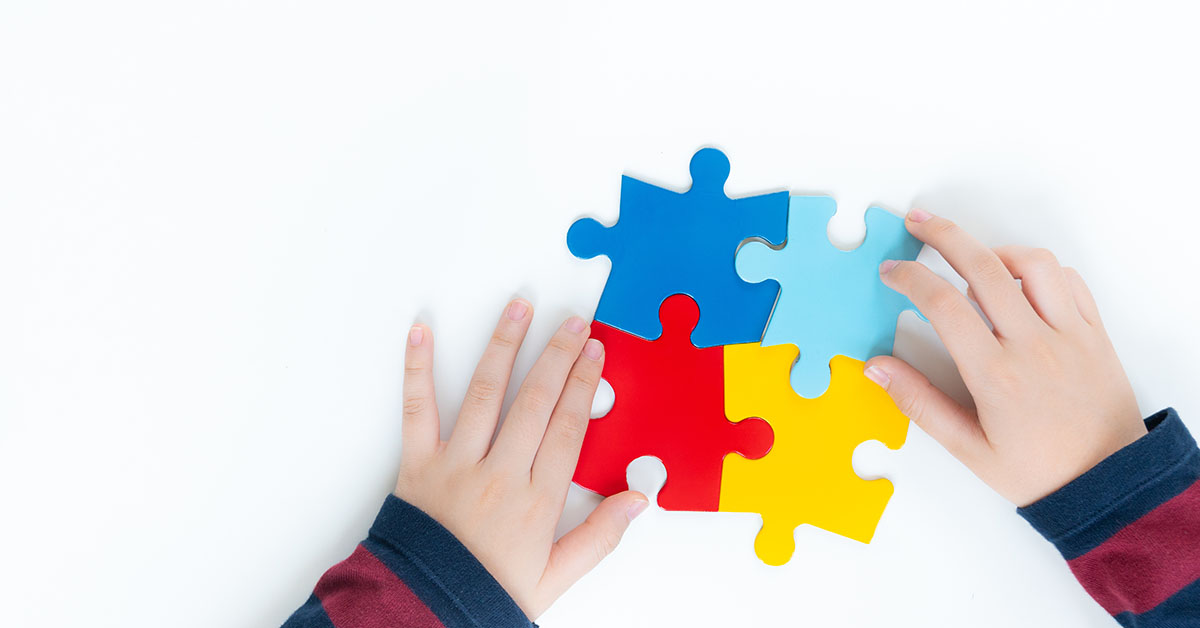Autism and Sensory Handling: Exploring the Connection and Its Impacts
Discovering Autism: Approaches for Reliable Interaction and Communication
Reliable interaction and communication with people on the autism range demand a thorough understanding of their one-of-a-kind needs and preferences. Techniques such as using clear language, using aesthetic supports, and cultivating constant routines can substantially enhance engagement and minimize anxiousness. Furthermore, identifying the significance of non-verbal hints and shared rate of interests leads the way for significant links. Nevertheless, the details of these approaches disclose more factors to consider that merit expedition, specifically in just how they can be adapted to diverse contexts and specific experiences. What might these adaptations resemble in technique?
Understanding Autism Range Problem
Autism Range Condition (ASD) incorporates a variety of neurodevelopmental problems defined by obstacles in social communication, communication, and repeated habits. The term "spectrum" reflects the diverse indications and varying degrees of seriousness experienced by individuals with ASD. While some might exhibit considerable problems, others may show high-functioning traits, permitting better independence in day-to-day live.
The start of ASD usually happens in early childhood years, with indications often identifiable by age two. Very early signs might include delayed speech growth, limited eye get in touch with, and problems in understanding social cues. Although the exact etiology of ASD stays vague, research recommends a mix of hereditary and ecological variables plays an essential duty in its development.
People with ASD often have distinct staminas, such as increased interest to detail and outstanding memory abilities. They may battle with understanding abstract ideas and taking care of changes to routine - autism. As a result, interventions and assistance tailored to specific needs are crucial for promoting communication and social skills. Identifying the complexity of ASD is essential for advertising awareness, acceptance, and reliable strategies that help with purposeful interactions with individuals on the range.

Value of Clear Communication
Reliable interaction is important for promoting understanding and link, specifically for individuals with Autism Range Condition (ASD) Clear interaction not only assists in social interactions however additionally improves the person's capability to share their requirements, thoughts, and emotions. For people with ASD, the nuances of language can often be challenging; for that reason, making use of unambiguous and simple language is important.
Additionally, clear communication helps in reducing aggravation and anxiousness that might emerge from misconceptions. When messages are communicated in a direct and constant manner, people with ASD are much better outfitted to analyze details precisely, which can considerably boost their social interaction and participation in different settings.
Establishing regimens and using aesthetic assistances can additionally bolster clear communication. These strategies supply people with predictable structures that help comprehension and retention of details. Furthermore, proactively listening and being patient throughout communications promotes an encouraging environment where individuals with ASD feel valued and comprehended.
Eventually, focusing on clear interaction not only encourages individuals with ASD however also cultivates more significant links with their peers, caregivers, and the bigger community, leading the way for comprehensive communications and collective partnerships. - autism
Non-Verbal Interaction Techniques
Interaction extends past words, and for people with Autism Spectrum Condition (ASD), non-verbal hints play a substantial role in communications. Non-verbal communication methods can include face expressions, motions, body movement, and eye call, every one of which work as essential elements for sharing feelings and intents.
Comprehending and translating these non-verbal signals can enhance interactions with individuals with ASD. A warm smile or open pose can create a welcoming environment, encouraging involvement. In a similar way, utilizing aesthetic help-- such as picture cards or symbols-- can link interaction gaps and aid communicate messages a lot more properly.
It is likewise vital to be conscious of personal room, as individuals with ASD might have various convenience degrees relating to closeness. Observing their try this website responses to physical distance can educate proper adjustments.

Producing Supportive Settings
Producing an encouraging atmosphere is essential for cultivating favorable interactions and boosting the well-being of people with Autism Spectrum Condition (ASD) Such atmospheres can substantially lower stress and anxiety and create a feeling of security, enabling people to reveal themselves a lot more openly.
To accomplish this, it is vital to take into consideration sensory sensitivities that people with ASD might experience. Customizing the physical room to consist of soft lighting, very little history noise, and comfortable seats can develop a calming environment. In addition, using constant regimens and clear aesthetic schedules can assist people prepare for transitions and decrease unpredictability, more advertising comfort.
Social spaces must be structured to decrease overwhelming stimuli while offering chances for involvement in recommended activities. Assisting in locations marked for silent time can additionally work as a refuge during moments of tension. Significantly, integrating aspects of selection encourages people, permitting them to work out firm in their setting.

Urging Social Communications
Cultivating social interactions amongst people with Autism Range Disorder (ASD) requires intentional strategies that prioritize comfort and engagement. Establishing predictable regimens can help in reducing anxiousness, making social setups more friendly. Developing organized atmospheres with specified duties and duties permits individuals to involve without the frustrating pressure of unstructured social characteristics.
Including rate of interests Find Out More and staminas into social tasks can work as a catalyst for communication. As an example, organizing group tasks around shared pastimes or topics of attraction can assist in natural discussions and connections. Additionally, making use of visual assistances, such as social scripts or photographic routines, can assist in understanding social signs and expectations.
Designing suitable social actions is critical - autism. Peers and grownups ought to show effective interaction techniques, including energetic listening and turn-taking. Role-playing scenarios can additionally offer a secure space for people to exercise these skills
Last but not least, fostering peer connections via inclusive techniques is vital. Urging inclusive playdates or team getaways can create chances for socializing in a comfortable setting. By carrying out these caretakers, strategies and educators can considerably improve social interactions for people with ASD, advertising their total social growth and health.
Verdict
Finally, efficient communication and communication methods are vital for supporting people with Autism Spectrum Disorder. Stressing clear language, integrating non-verbal signs, and developing foreseeable routines significantly boost interaction and reduce anxiousness. Producing encouraging atmospheres fosters secure social interactions, while urging shared interests facilitates significant connections. Eventually, these strategies empower people with autism to browse social landscapes, promoting their total well-being and making it possible for the development of long-term relationships.
Reliable communication and interaction with individuals on the autism range demand a comprehensive understanding of their distinct demands and choices. Clear communication not only helps with social interactions however additionally boosts the individual's ability to express their ideas, feelings, and demands.Cultivating social communications amongst people with Autism Range Condition (ASD) needs deliberate methods that focus on convenience and interaction. By carrying out these approaches, caretakers and instructors can significantly boost social communications for individuals with ASD, promoting their overall social growth and health.
In final thought, effective interaction and communication techniques are important for supporting people with Autism Spectrum Disorder.